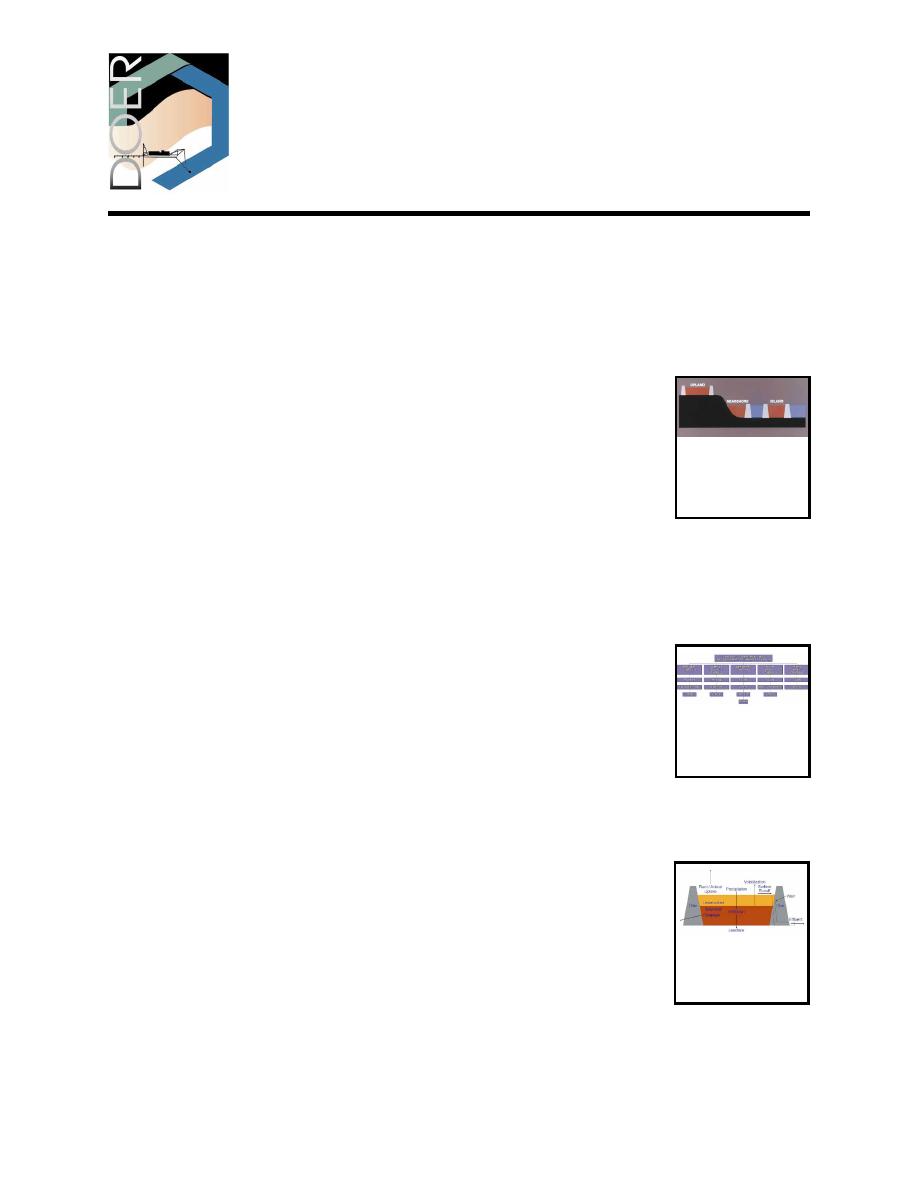 |
||
|
|
||
| |||||||||||||||
|
|
 ERDC TN-DOER-C18
August 2000
Confined Disposal Facility (CDF)
Containment Features:
A Summary of Field Experience
PURPOSE: Confined disposal facilities (CDFs) are one of the most widely used technologies for
managing contaminated sediments. The effectiveness of a CDF in containing contaminants depends
on the design, construction, operation, and management of the facility. This technical note describes
field experiences with the application of containment features to improve the effectiveness of CDFs
in retaining contaminants in the CDFs and reducing the potential for contaminant losses to surface
water, groundwater, air, plants, and animals.
BACKGROUND: A CDF is an engineered structure designed to provide the
required storage volume for dredged material and to meet the required sus-
pended solids in effluent released from the facility. Procedures for design of
To view figure
CDFs for storage volume and for suspended solids retention are provided in
larger, click here
Engineer Manual 1110-2-5027 (Headquarters, U.S. Army Corps of Engineers
1987). A CDF may be constructed as an upland site, as a nearshore site with
one or more sides exposed to the water, or as an island containment area.
Figure 1
Typical CDF configurations are illustrated in Figure 1.
The joint U.S. Army Corps of Engineers (USACE) and U.S. Environmental Protection Agency
(USEPA) document "Evaluating Environmental Effects of Dredged Material Management Alter-
natives--A Technical Framework" (USACE/USEPA 1992) provides evalu-
ation guidance for selecting an appropriate dredged material disposal alterna-
tive and further provides procedures for identifying contaminant loss pathways
requiring control measures necessary for any disposal alternative. Figure 2,
extracted from the framework document, shows various pathways and control
To view figure
measures that may be considered to enhance containment or to reduce con- larger, click here
taminant losses for each pathway of concern. Control measures for CDFs
providing containment of contaminants, not treatment, are the focus of this
Figure 2
technical note. Field experiences related to containment features retrofitted
for existing CDFs and containment features designed as an integral part of new CDFs are described.
DESCRIPTION OF CONTAINMENT APPROACHS: Contaminant loss
pathways for a CDF are illustrated in Figure 3; these pathways include effluent,
surface runoff, leachate, dike seepage, volatilization, plant uptake, and animal
uptake. When environmental standards or guidelines are not met for one or
more of these pathways, contaminant control measures can be considered to To view figure
larger, click here
reduce impacts to acceptable levels. Control measures may consist of treat-
ment of sediments or pathway releases or operational or engineered contain-
ment measures, or both. Containment in a CDF may be defined as an
Figure 3
operational approach or engineered feature intended to function as a contami-
nant control measure to reduce the migration or transport of contaminants via one of the pathways.
|
|
Privacy Statement - Press Release - Copyright Information. - Contact Us - Support Integrated Publishing |